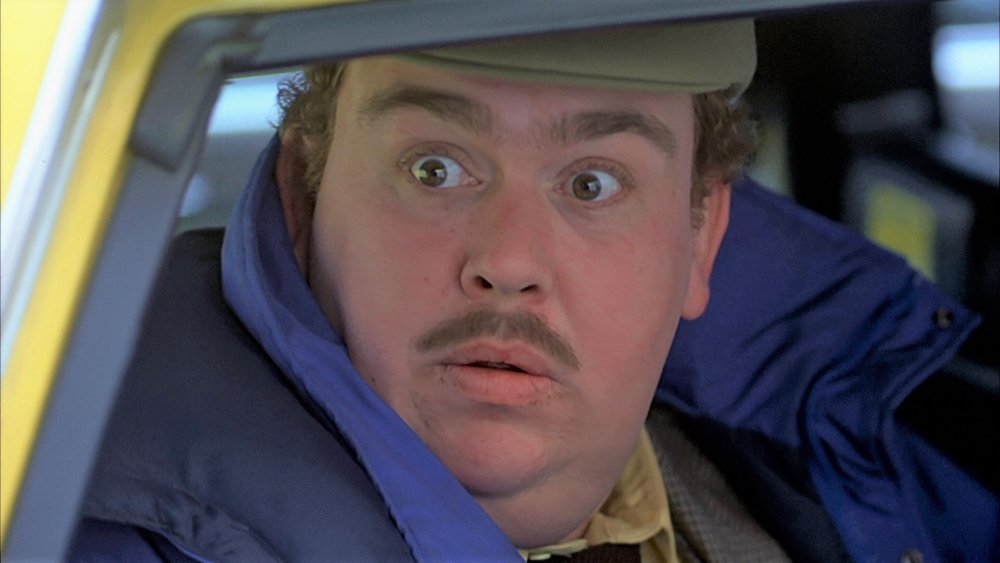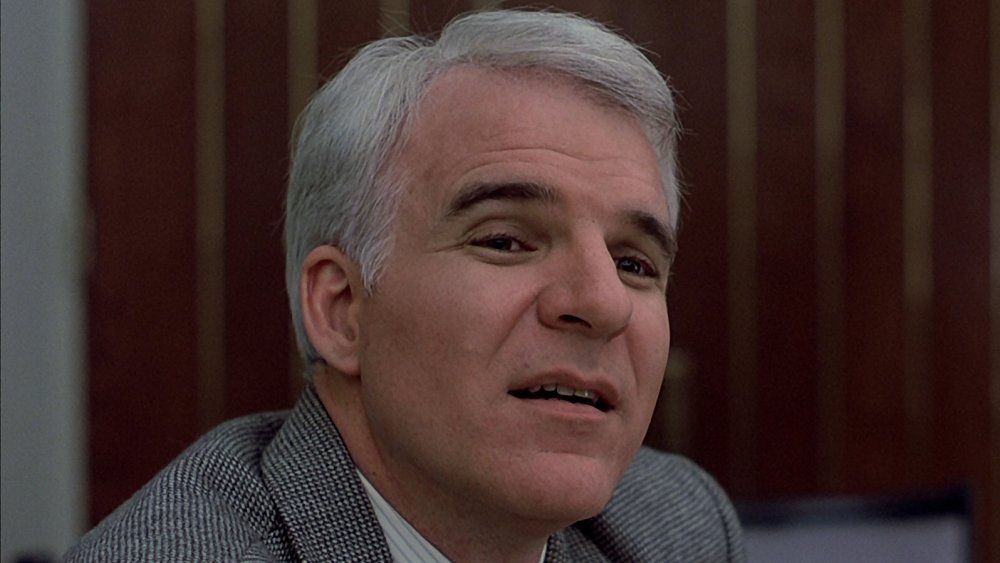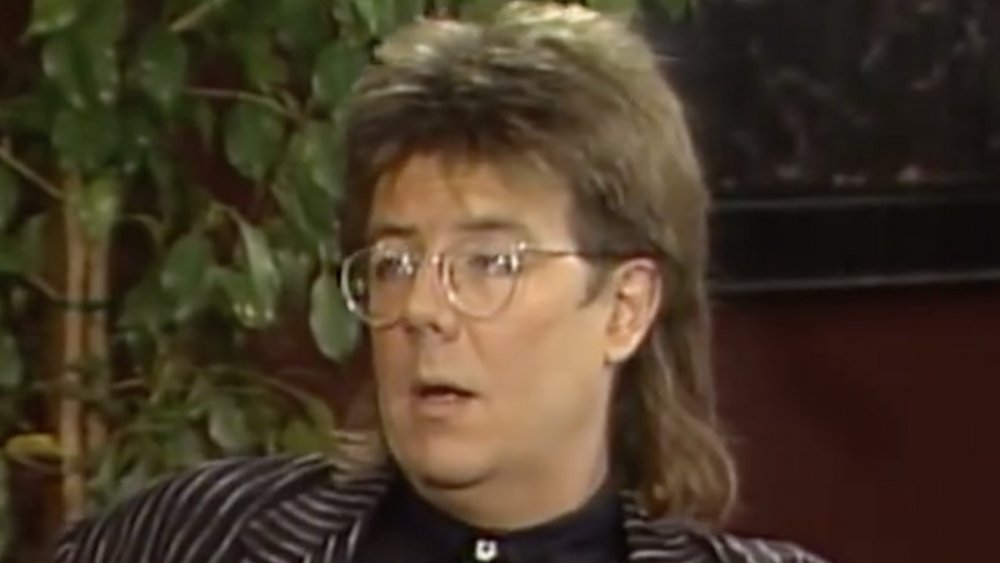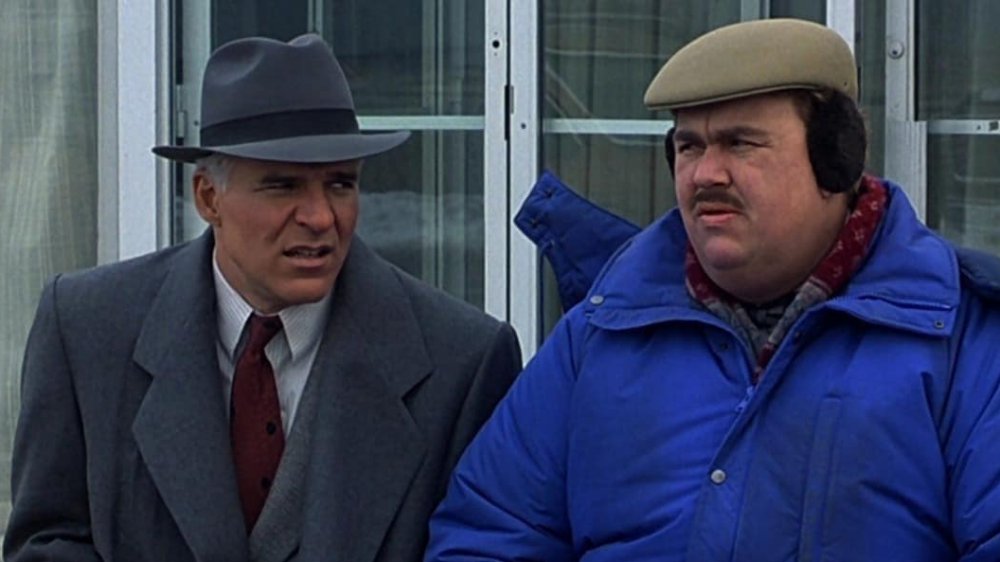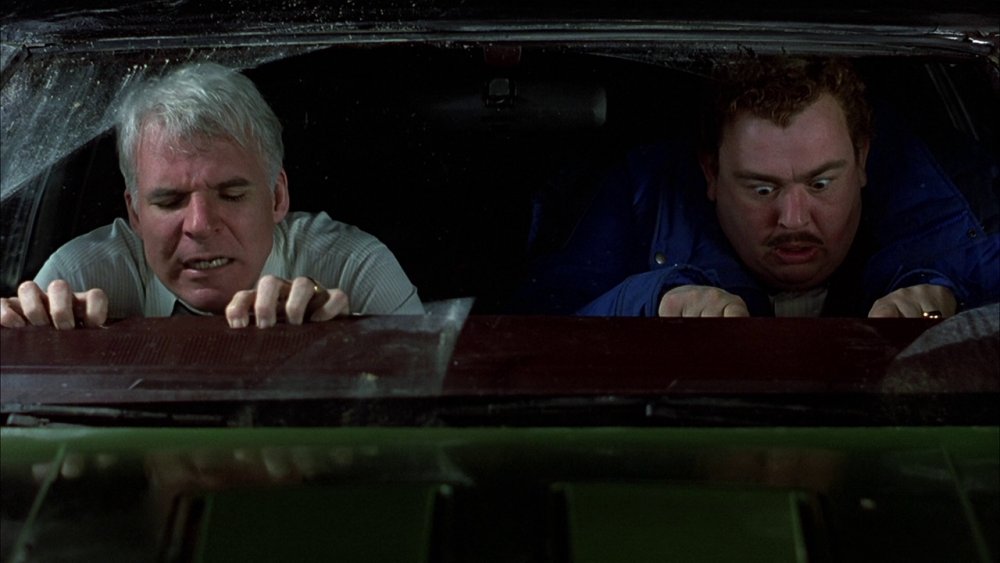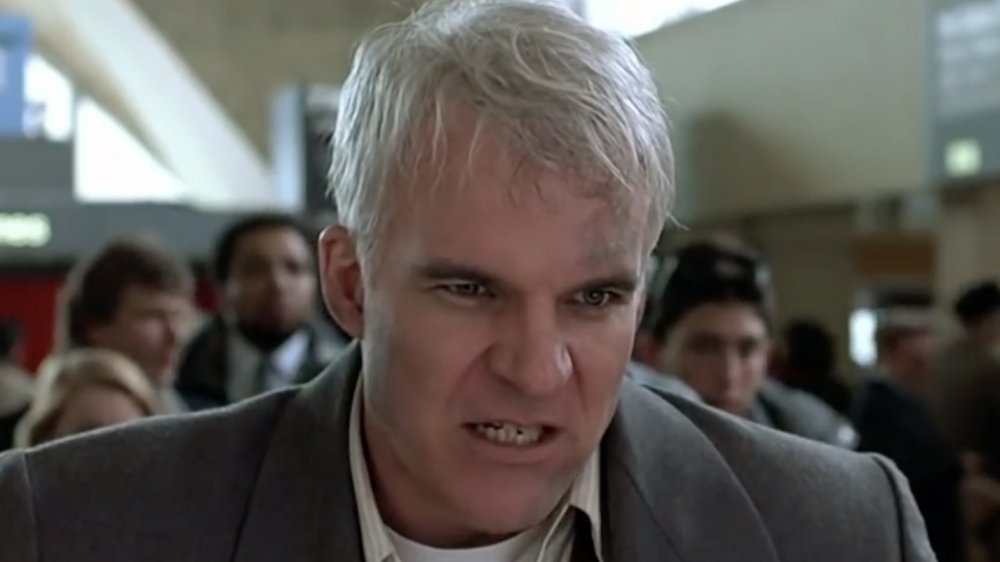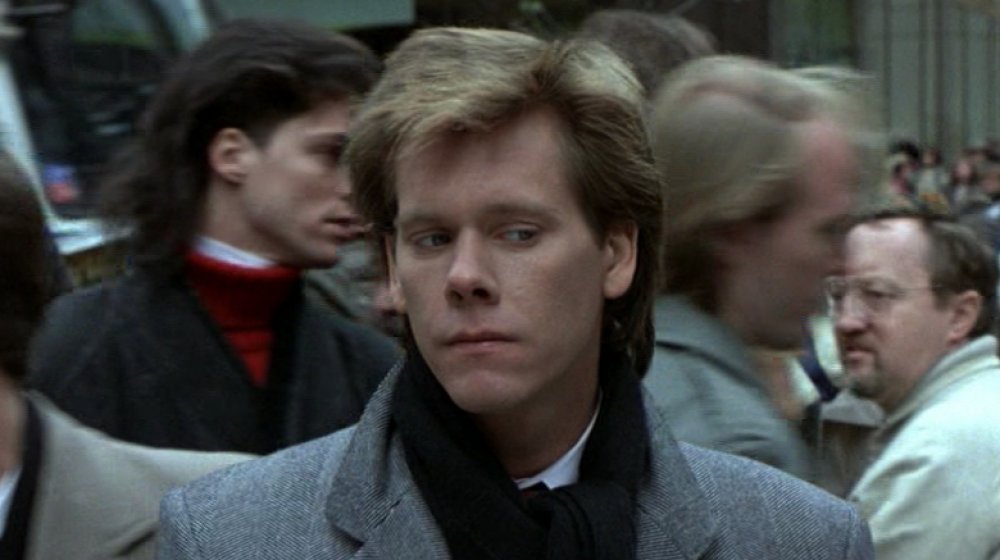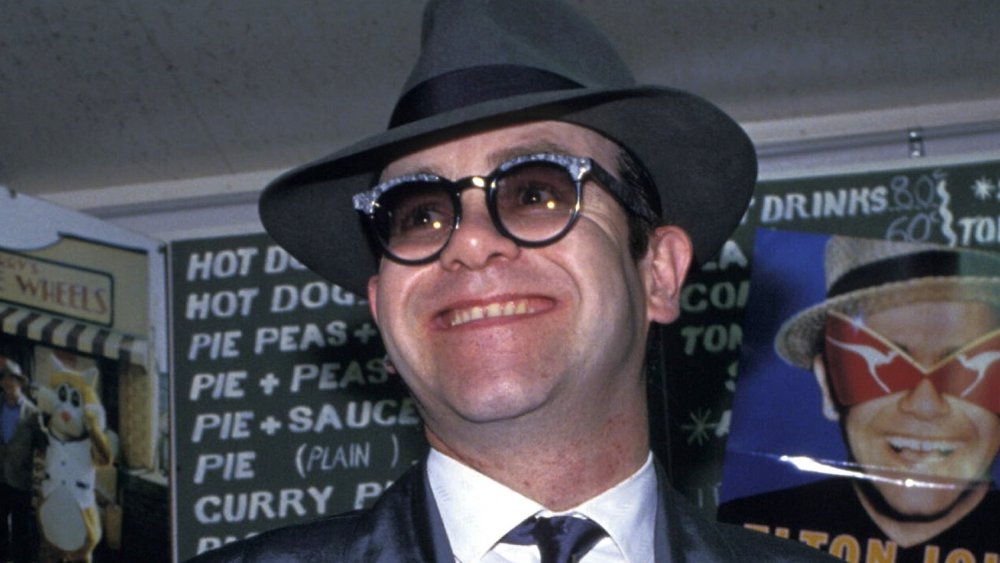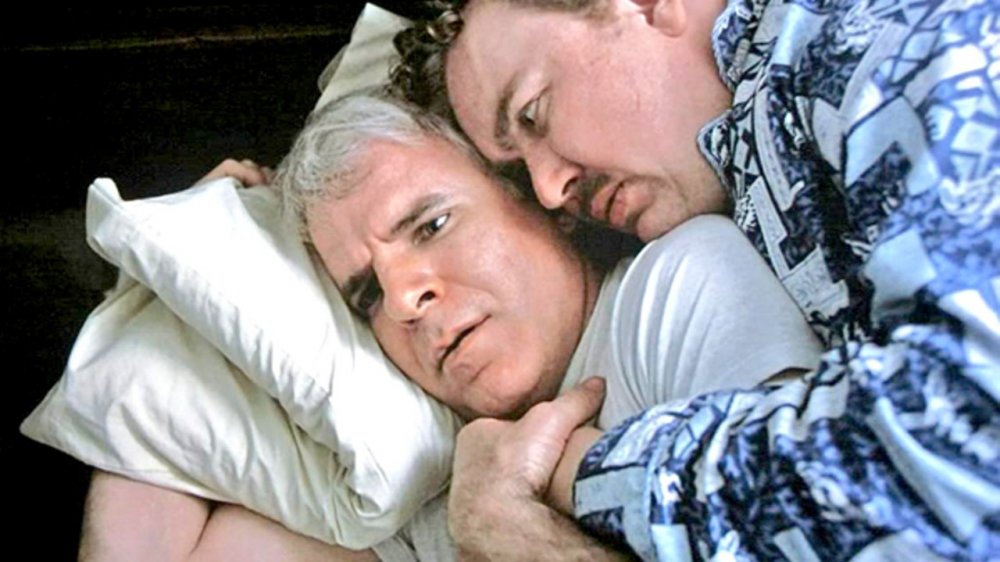The Untold Truth Of Planes, Trains And Automobiles
There are literally hundreds of Christmas movies, but for such a major American holiday about the cinematic theme of family togetherness, there are surprisingly few films centered around Thanksgiving. Perhaps that's because the world doesn't need many more Turkey Day movie options besides Planes, Trains and Automobiles. Released to theaters in 1987, it's evolved into an enduring classic, rewatched each and every year by countless people thanks to home video, streaming, and cable TV.
A mix of The Odd Couple and a road movie, the film throws together uptight marketing executive Neal Page (Steve Martin) and gregarious-to-the-point-of-obnoxious shower curtain ring salesman Del Griffith (the late John Candy). The two are forced to endure multiple modes of transportation, indignities, and delays as they both try to get home to Chicago to celebrate Thanksgiving. Nothing goes as planned, and Del drives Neal mad, only for a surprising twist ending (courtesy of writer-director John Hughes) to impart a lesson about the true meaning of the holiday. However, there's a lot more to this Thanksgiving flick than what you see up on the screen, and today, we're diving into the untold truth of Planes, Trains, and Automobiles.
It's based on a true story
The action of Planes, Trains and Automobiles occurs over the course of just three days. And, according to Kirk Honeycutt's John Hughes: A Life in Film, three days is also how long it took writer-director John Hughes to pen the movie's screenplay. The film's editor, Paul Hirsch, claimed at a Hughes tribute event that the filmmaker knocked out the first 60 pages of the script in just six hours.
Perhaps Hughes was so speedy with this one because, as the old adage instructs, he wrote what he knew. Before his career as a screenwriter took off, he wrote advertising copy for the Leo Burnett agency, which is very similar to Neal's job as a marketing wiz. And as his old boss Robert Nolan told The Huffington Post in 2009, Hughes once endured a real-life travel nightmare. "John had an 11 a.m. presentation in New York on a bleak winter Wednesday. He flew out of Chicago at 7 a.m., planning to return to Chicago on the 5 p.m. plane," Nolan said. Strong winds grounded a ton of flights, so Hughes had to crash at an NYC hotel. The next day, a snowstorm canceled his Chicago flight, but he got on another one ... which was rerouted to Iowa, but then landed in Denver when the Des Moines airport was snowed in. Hughes eventually touched down in Phoenix before finally making his way home, and that nightmarish journey helped him write about Neal Page's insane adventure.
John Hughes gave away Planes, Trains and Automobiles ... and then took it back
While John Hughes could write a screenplay with mind-boggling speed, directing a movie took him as long as it takes most everybody else. In other words, it took him months. As a result, there just wasn't enough time for Hughes to direct every single movie he wrote. Hughes penned the scripts for a whopping 16 major motion pictures in the 1980s, and seven of those he directed. Among the movies where Hughes did double-duty were Sixteen Candles, The Breakfast Club, Weird Science, and Ferris Bueller's Day Off.
Whenever Hughes couldn't work it into his schedule to direct, he entrusted Howard Deutsch for the job. Deutsch directed three Hughes-penned movies: Pretty in Pink, Some Kind of Wonderful, and The Great Outdoors. He almost had Planes, Trains and Automobiles on his resume, too. Hughes had just finished directing She's Having a Baby, and he gave Deutsch the call for Planes, Trains and Automobiles. But then once Steve Martin signed on to star, Hughes took the project back for himself and gave Deutsch the assignment of Big Country, which was later renamed The Great Outdoors.
The movie was almost as long as the characters' journey
Planes, Trains and Automobiles runs 93 minutes, and in that time, audiences feel every bit of Neal and Del's frustration as they try to get back to Chicago. But writer-director John Hughes initially wanted the audience to empathize and understand their exhaustion even more. According to Kirk Honeycutt's John Hughes: A Life in Film, the shooting script for the film ran 145 pages. As one page generally equals a minute of screen time, this means Hughes envisioned a two-and-a-half-hour comedy. When Steve Martin first received his noticeably large script, he figured Hughes would eventually cut out some scenes, and so he asked the writer-director what parts he thought he might delete. As Martin tells it, "He looked at me strangely and said 'Cutting?' I realized he had no intention of cutting anything!"
Adding to an excessively lengthy script, Hughes encouraged stars Martin and John Candy to ad lib as much as they wanted. All together, according to Martin, that helped make a first cut of Planes, Trains and Automobiles that ran four-and-a-half hours. Eventually, Hughes trimmed that down to a three-and-a-half-hour director's cut (Home Alone director Chris Columbus has seen it), but he finally signed off on the 93-minute version that hit movie theaters.
There's a lot of footage cut from Planes, Trains and Automobiles
As Planes, Trains and Automobiles entered production with a 145-page script and a director adamant on shooting every word, a lot of material wound up excised from the final, theatrical cut of the movie. For example, the crew filmed a sequence set in a strip club. In the deleted scene, after Neal and Del's car catches fire, they pop into the establishment to use the phone, and Del gets very distracted by the scantily clad women on stage.
Another moment involved Jeri Ryan — Seven of Nine on Star Trek: Voyager — who messed up the role and got herself fired. During a bus scene, Candy and Steve Martin were "doing goofy things between takes," Ryan told Mr. Showbiz (via SFFChronicles). After three days of laughing too hard at Candy and Martin's antics when cameras rolled, the neophyte was told not to come back. Even previous Hughes collaborators weren't safe. Jeffrey Jones, Principal Ed Rooney from Ferris Bueller's Day Off, had his part cut from the movie, too.
As for the movie's shocking, heartbreaking twist ending — when Del reveals that the wife he's been talking about for the whole movie died eight years earlier, and he actually doesn't have anyone to go home to for Thanksgiving — it was nearly even sadder. After the revelation, Candy ad-libbed some lines about how his character is so lonely that he latches on to people, "but this time I couldn't let go." That bit didn't make it into the film.
Why is this movie rated R?
Content-wise, Planes, Trains and Automobiles is a very mild movie. That's part of why it's a perennial classic that can be viewed and enjoyed by whole families every Thanksgiving. Still, the film's original, theatrical cut carries an R-rating from the Motion Picture Association of America, even after an appeal was filed by its filmmakers. (So that means, to the MPAA, Planes, Trains and Automobiles, a funny and touching comedy of errors about travel, is just as harmful for kids as other R-rated movies of 1987, such as the ultra-violent RoboCop and Predator.)
So why the stiff rating? Well, Planes, Trains and Automobiles got its restricted rating because of 19 utterances of the F-word ... all of which come in a single scene. After an exasperated Neal finds his rental car missing from a lot, he traipses through miles of snow, mud, runways, and embankments back to an airport and demands a car from the agency's desk clerk (Edie McClurg) with a profane rant riddled with 18 F-bombs. When the incredibly rude Neal fails to produce his rental agreement, McClurg gets the last word, proclaiming, "You're f***ed."
One degree of Kevin Bacon
Just before John Hughes started directing Planes, Trains and Automobiles, the filmmaker best known for teen comedies finished up a more adult-oriented comedy, She's Having a Baby. The movie finds Kevin Bacon and Elizabeth McGovern as a young married couple anxious about starting a family. Planes, Trains and Automobiles seems to be set in the same cinematic "universe" as that film, although its events also take place in a world where She's Having a Baby is also a movie.
See, there'a scene in Planes, Trains, and Automobiles where Neal (Steve Martin) talks to his wife, Susan (Laila Robins) over the phone. A TV on in the background plays a scene from She's Having a Baby ... which wasn't released until February 1988, about three months after Planes, Trains, and Automobiles. John Candy, a star of Planes, Trains and Automobiles, makes a cameo in She's Having a Baby, but in character as Chet, the guy he played in The Great Outdoors, a film not released until June 1988, four months after She's Having a Baby. And it all comes full circle with Kevin Bacon. The actor briefly appears at the beginning of Planes, Trains and Automobiles, stealing a taxi from Neal. That same scene repeats from Bacon's character's perspective in She's Having a Baby. Weird.
This isn't your song
Most of the songs that play throughout Planes, Trains and Automobiles are thematically appropriate. They're tunes about travel (Steve Earle's "Six Days on the Road") and tunes about wanting to be done traveling (Emmylou Harris' cover of Patsy Cline's "Back in Baby's Arms"). However, the film is unlike other John Hughes movies in that it lacks a definitive theme song. While The Breakfast Club had "Don't You (Forget About Me)" and National Lampoon's Vacation had "Holiday Road," there's no signature song here ... but there one was in the works.
Hughes' production company had contracted Elton John to co-write and record a song for Planes, Trains and Automobiles. Two days before he was supposed to record it in a U.S. studio, he pulled out of the project. "We'd seen and loved the film, the lyric was written, and Elton had almost finished the tune when we discovered Paramount wanted various things which were difficult to arrange," the lyricist for the song, Gary Osborne, told the Los Angeles Times. He blamed "contractual technicalities," which is a nice way of saying that Paramount, the company releasing the film, wanted to own the master to John's song. That couldn't be negotiated, or at least not negotiated quickly. In the U.S., John was on MCA Records (home of the Planes, Trains soundtrack), but everywhere else in the world, he was a Polygram artist. As his songs were contractually owned by Polygram at the time, he couldn't legally record for MCA.
Planes, Trains, Automobiles, and football stats
In a movie full of memorable moments, one of the most notable comes when Neal and Del, forced to share a tiny motel room together, wake up snuggling. Del mentions keeping his hand in between a couple of pillows, and Neal quickly comes to the realization that Del is spooning him ... and thus his hand is decidedly not wedged between two pillows. That's when the two jump up and try to shake off this moment of inadvertent, male-on-male physical content with a manly discussion of the Chicago Bears. "Did you see that Bears game last week?" Neal asks. "Hell of a game, hell of a game," Del replies in a deep, masculine voice. "Bears got a great team this year, they're gonna go all the way."
If Planes, Trains and Automobiles took place in the year it was released — 1987 — this means that the Bears game Neal and Del discuss took place on November 22, the Sunday before Thanksgiving. In what's a remarkable bit of accuracy for this very brief conversation, the Bears really did play a great game "last week." They defeated the Detroit Lions 30 to 10 and improved to an 8-2 record. (However, the Bears didn't make good on Del's prediction that they'd "go all the way," losing to Washington in the first round of the playoffs.)
